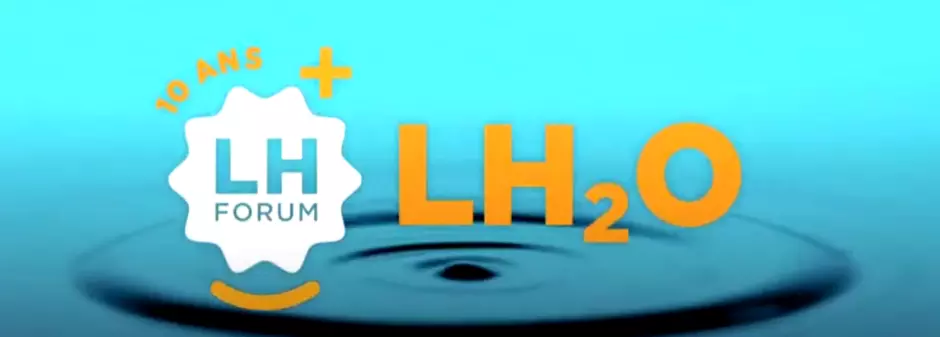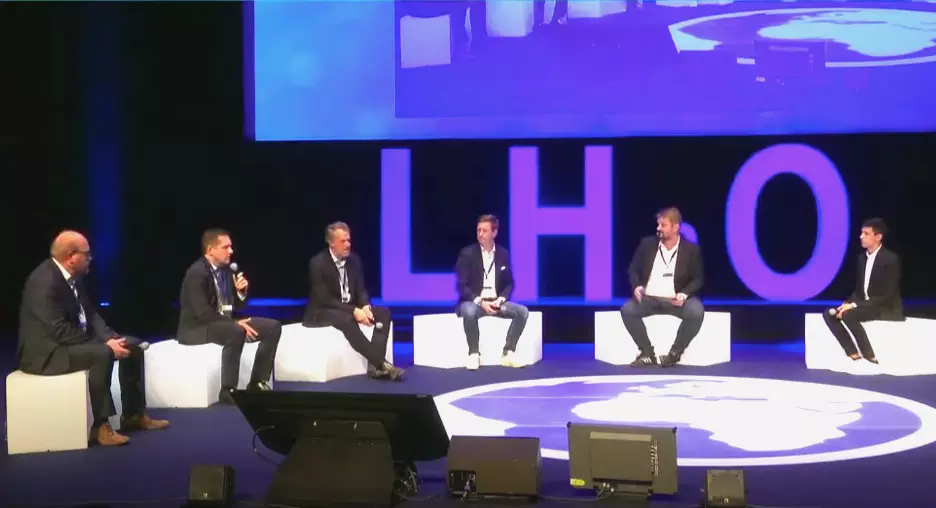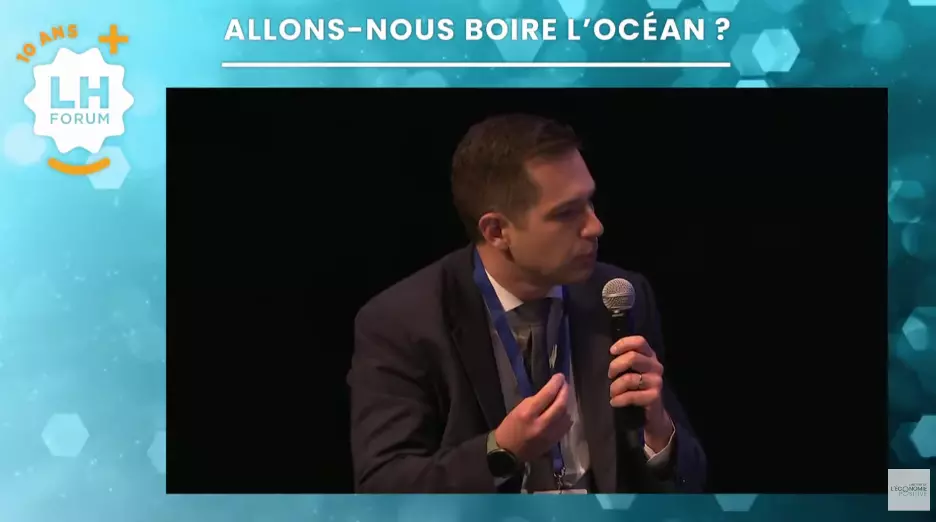This year the LH Forum, created 10 years ago by Jacques Attali in Le Havre (France), becomes the forum “LH2O, the future of the blue planet”. This event, aimed at all the players in the maritime economy, deals with the issues related to water, in all its forms and in all its uses. September 23 was dedicated to the theme of “The sea, the future of Man”. Questioned by the Forum's youth council, Pierre Ribaute, Director of the France Water zone at Veolia, presented the Group's solutions in the round table discussion entitled “Are we going to drink the ocean?”

Water is the essential resource for any development. However, according to the UN, our water consumption will increase by 50% by 2030 due to the needs of industry, energy and population growth, while resources are limited and drought threatens. Given that less than 3% of the water on earth is freshwater, with only 1% in liquid form, does the ocean represent the hope of a resource for humanity?
Drinking water: a local resource
Pierre Ribaute recalled that the quality of Veolia's drinking water in France is the result of 60 parameters observed continuously and 16 million analyses carried out each year. It is a local resource because it is found beneath the earth and on the surface.
In France, there are areas of water stress. For example, in the region of Le Havre, it is estimated that the level of the Seine, upstream of the agglomeration, will have dropped by 20 to 30% by 2050. We must act: once collected, the water that we do not lose becomes an additional resource. And thanks to digital data, we are able to reduce water network leaks. But the main issue remains the local environmental impact, because tap water is drawn, treated and distributed locally.

Are we going to drink the ocean?

In many parts of the world, Veolia uses two desalination technologies: membrane filtration and distillation. In our desalination plants, we optimise energy consumption, for example by using waste heat. Veolia has already deployed 2,300 desalination plants, mainly in water-stressed coastal areas. The smallest factories are installed on islands, such as the Canary Islands, and the most complex systems are mastered and proven, as in the Middle East [see box 1]. But only 25% of the world's population lives 25 km from the coast, and 40% at 100 km. For the others, this solution is not possible.
Reusing wastewater for drinking water: a necessity
For Pierre Ribaute, it is evidently necessary to reduce consumption but also to reuse water. In the United States, California is considering passing a law to reuse wastewater for drinking water). Spain and Israel have already adopted this solution.
In France, La Roche-sur-Yon, in the Pays de la Loire region, experiences peaks in consumption every summer. Veolia has launched the Jourdain project with Vendée Eau [see box 2] where 150 m3 per hour of wastewater is treated and then transported to a wetland, before being reintroduced into our drinking water production plant. Many solutions exist to act on the water resource. They must be rolled out. Due to climate change, our responsibility in terms of this precious resource is increasing, concluded Pierre Ribaute.
Desalination at Veolia
With a cumulative treatment capacity of around 13 million cubic metres of water per day at more than 2300 sites around the world and in 108 countries, Veolia is the world leader in desalination. Some examples:
-
In the United Arab Emirates, in Fujairah, a hybrid desalination plant produces 590,000 m3/day of water desalinated by distillation and membrane treatment. And in Umm Al Quwain, 682,000 m3/d are produced in partnership with China Gezhouba Group Co.
-
In Kazakhstan, in the Manguistaou region on the coast of the Caspian Sea, a new installation located in Aktau produces 125,000 m3 per day.
-
In Kuwait, the Az Zour South plant, which operates by reverse osmosis, has a capacity of 136,450 m3 of treated water per day using fatal energy recovered from a power plant.
-
In Bahrain, at the Al Dur site, a desalination plant using reverse osmosis treats 227,300 m3 of water per day.
-
In Saudi Arabia, for the city of Rabigh, the largest reverse osmosis plant in the Gulf countries supplies 2 million inhabitants with 600,000 m3/d; And in partnership with Marafiq, 300,000 m3/d are produced for the city of Jeddah, with a future extension to 500,000 m3/d.
- In the Sultanate of Oman, a Salalah desalination project will treat 95,000 m3 of water per day.
Converting wastewater into drinking water: the Jourdain program (France)
Jourdain reproduces the water cycle in a planned and supervised manner. Rather than being discharged into the ocean, part of the water leaving the wastewater treatment plant in Sables d'Olonne (France) is recovered to undergo additional treatment in a refining plant: 5 successive stages eliminate the salinity, microbiological compounds and micropollutants (pesticides, pharmaceutical or industrial compounds). The water is then transported 25 km to the Jaunay dam in a vegetated area to regain its natural state in the river, before finishing its circuit in the local drinking water production plant. 150 m3/h will be treated by the refining plant (from 2023 to 2026), i.e. a quarter of discharges from the urban area, then in 2027, 600 m3/ h, i.e. an additional resource of 1.5 million m3 drinking water from May to October.
Water in France (source BIPE in 2017):
Mains water: 5.1 billion m3 of water per year 48% for domestic uses, 29% for agriculture, 24% for industry (excluding energy).
Waste water 5 billion m3 of water per year
For more information
> The reuse of wastewater, a second life for an essential resource
> Energy efficiency for better management of the water cycle
> LH Forum 2021 replay - Day 1, Thursday 24 September: round table “Are we going to drink the ocean” (in French only - view from 3:35:35)
> LH Forum 2021

